“Woman can, if she will.” – Augusta Van Buren
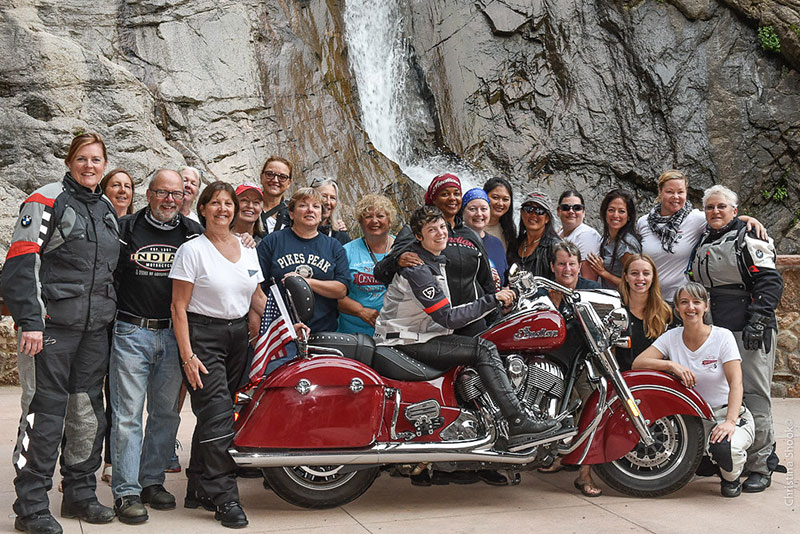
It all started with a very modest idea: gather a small group—say 10 women—and ride across the country, New York to California. After doing a bit more research, ride organizer Alisa Clickenger stumbled across the story of two intrepid women, Augusta and Adeline Van Buren, who in 1916 set out to prove to the U.S. government that women would make perfectly capable military dispatch riders, freeing up the men for combat-related duties. Gussie and Addie, as they were known, saddled up on a pair of 1,000cc Indian Powerplus motorcycles, and set out from Brooklyn, New York, on July 4. They arrived in Los Angeles two months and 5,500 miles later, becoming not only the first women to cross the continental United States on their own solo motorcycles, but also the first women to reach the 14,115-foot summit of Pikes Peak on any motor vehicle.
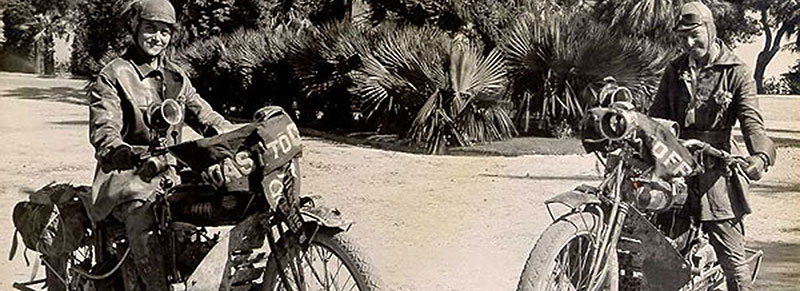
Despite their achievement, their efforts to become dispatch riders were unsuccessful. In a time when women didn’t even have the right to vote, the sisters were arrested multiple times over the course of their journey—for wearing pants! Newspaper and magazine coverage praised the top-of-the-line Indian motorcycles, but played down the women’s accomplishments, with some going so far as to accuse the sisters of using their cause to escape their “duties” as housewives, and that they simply enjoyed the attention drawn by their khaki and leather outfits.
As Clickenger learned more about the Van Buren sisters and their descendants’ commemorative efforts (a 2006 ride retracing the sisters’ route by Bob Van Buren, a great nephew, raised money for the Intrepid Fallen Heroes Fund), she became determined to host her modest ride on the centennial anniversary, July 2016.
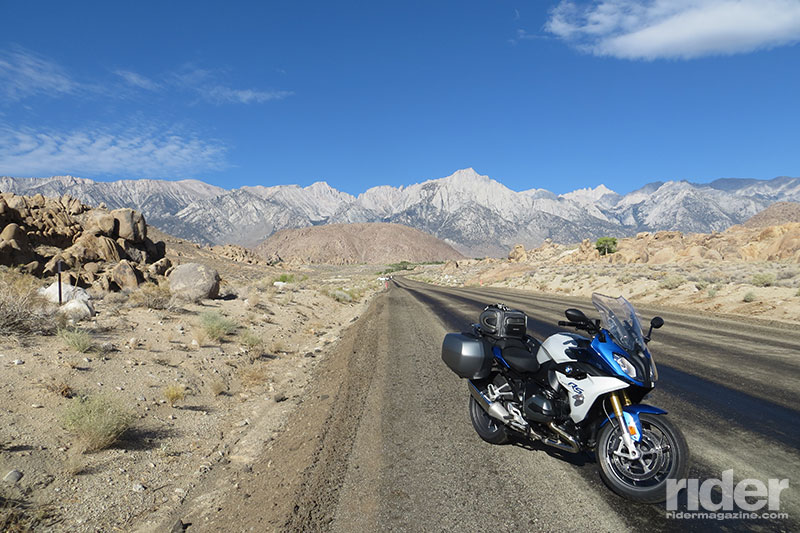
By spring of that year, the Sisters’ Centennial Ride had snowballed into something much larger than Clickenger ever imagined. Title sponsor BMW had jumped in with an escort car and two X5 SUVs to tow the support trailers, plus motorcycles for guides and participants to ride, and Indian Motorcycle and Suzuki also donated several bikes. Sena equipped the guides with Bluetooth helmet communication systems and Olympia Moto Sports outfitted them in the latest apparel. Two charities were selected to benefit from the ride efforts: Final Salute, Inc., which provides housing for the more than 500,000 homeless female veterans in the U.S.; and the Women’s Coalition of Motorcyclists, which provides funding for motorcycle train-the-trainer scholarships to get more female instructors and coaches on staff around the country.
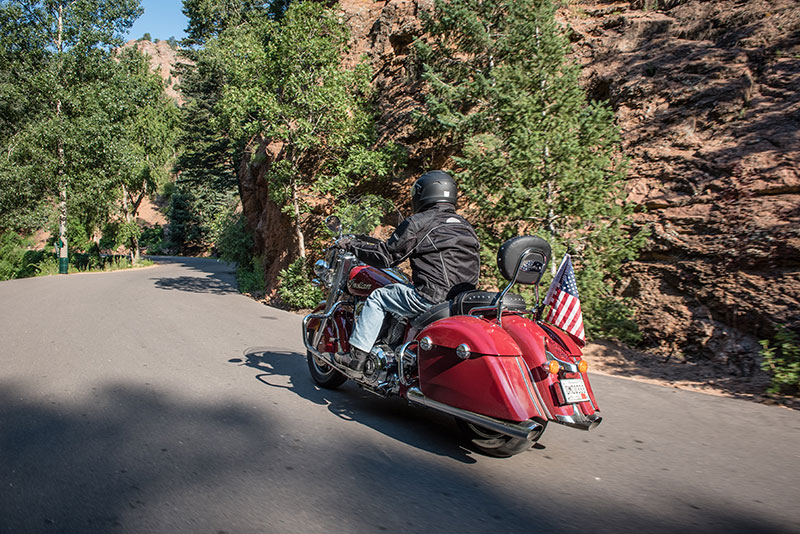
In the end, 68 riders, all but a handful of them women, made the 21-day coast-to-coast trek. They were accompanied along the way by riders (like me) who joined them for a day or two, or perhaps a week, culminating in a final triumphant ride across the Golden Gate Bridge in a procession at least 150 riders strong. We were met and escorted into and through the city by the San Francisco Motorcycle Club, the oldest club in the country (established in 1904).
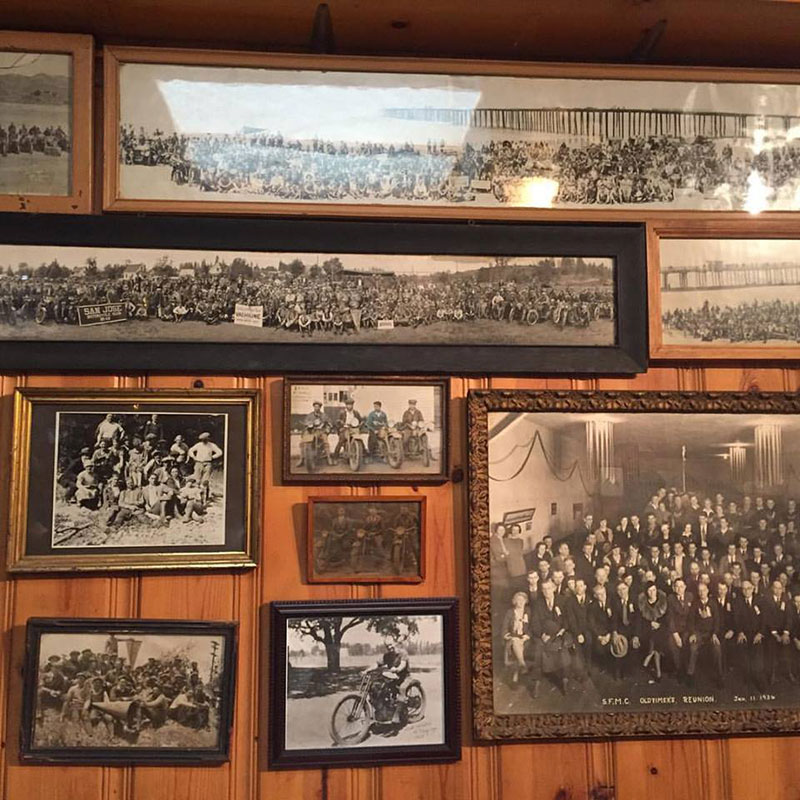
As the story goes, the SFMC was supposed to meet Gussie and Addie upon their arrival, but because communication was difficult, there was no way to notify the club that the sisters were delayed and they arrived to the sound of crickets. For the centennial ride, the club wanted to “make things right,” as they explained—and make things right they did. We were escorted across the bridge and taken on a scenic tour of the city, including the Presidio of San Francisco, Sea Cliff and the Great Highway along the beaches on the far western edge of the Sunset District, then around Twin Peaks into the Castro and finally ending at the clubhouse in the Mission District, where a spread of meats, cheeses, fruits and veggies awaited us.
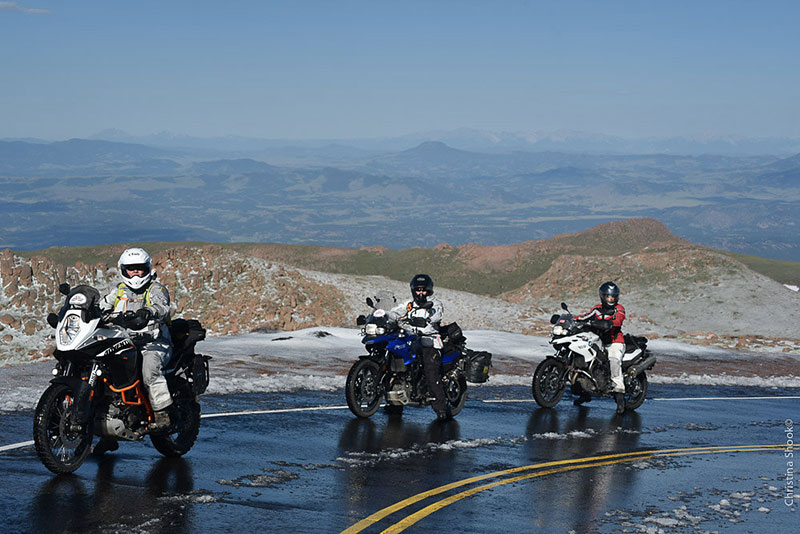
A lot has obviously changed in the 100 years since the Van Buren sisters made their record-setting crossing, and women now represent about 13 percent of the motorcyclists in the U.S. When you think about it, though, we’re still only three full generations removed from that era, when a woman could be arrested for the crime of not wearing a dress. A ride like this is empowering and proves that women are more capable than we’ve been given credit for—and it’s also a little scary. For several of the women I had the pleasure of meeting while on the ride, this was something they weren’t entirely sure they could do. And so they were proving it to themselves just as much as to their husbands, friends or family.
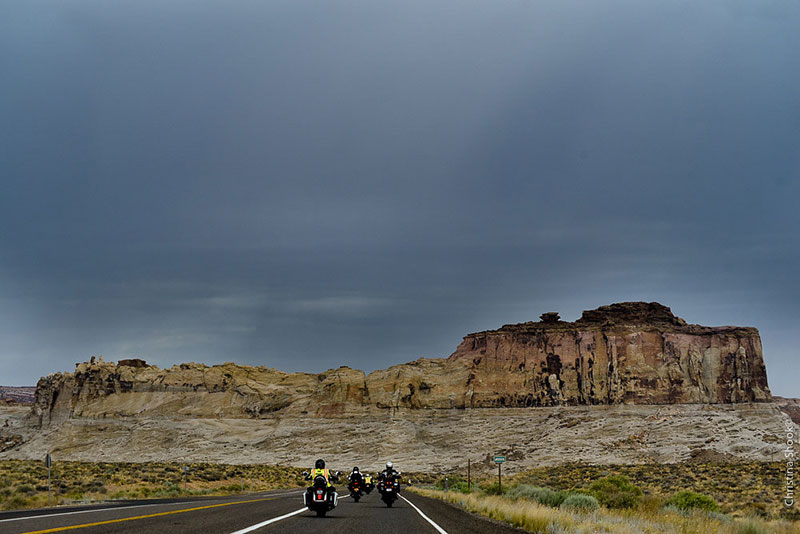
All of the cross-country riders had their own reasons for committing three weeks of their lives (not to mention the $5,725 cost for the all-inclusive tour) to participate in the historic ride. I sat next to one at dinner in Ely, Nevada, where I joined the group for the last two days’ of the ride. Mary is from North Carolina and a bookkeeper for a fast food franchisee, who up to this point had never ridden farther west than the Appalachians. The idea of doing something like this excited and inspired her, and it also terrified her. She confided to me that she had a few “moments in the ladies’ room,” as she put it, where as the time grew near, panic would set in as she realized the magnitude of what she was doing. She’s been riding since 1976, and up until recently her husband would join her, but he decided he’s getting too old to ride. She knew this might be her last chance to do something like this. He discouraged her at first (I guess we still aren’t that far removed from those antiquated attitudes after all), telling her that she’d fail: she’d get sick or the bike would break down or she would just get tired and lose her will to finish. At dinner in Ely, two riding days from the Golden Gate and the finish, I smiled at her and said, “He’s going to be so proud of you when you succeed.” She looked at me, nodded and calmly replied, “I think he’s getting to that point.” Three weeks of summer heat, thunderstorms, deserts, winding mountain roads and extreme altitude shifts had made her strong.
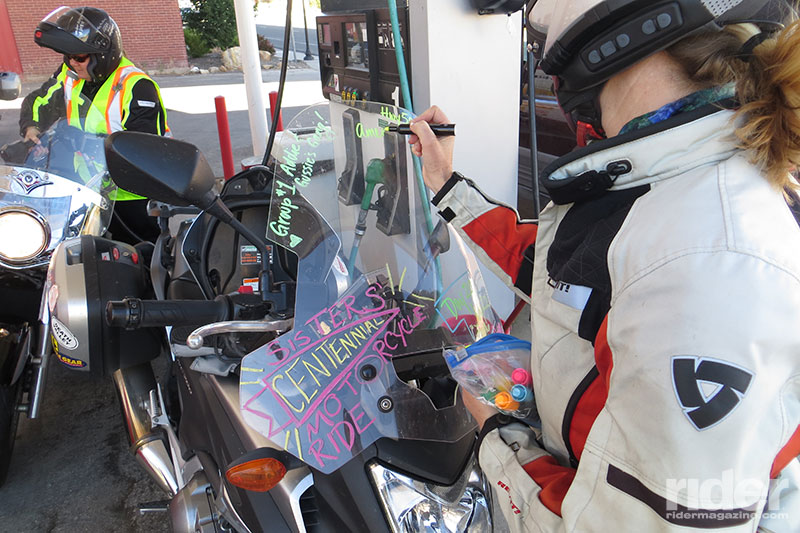
At lunch the next day, somewhere in the middle of Nevada, I sat with Group 1, about eight women who have all been on the ride since New York and who have formed a bond after three weeks together. Four of them met at one of Ken Condon’s Riding in the Zone skills classes in Massachusetts the week before the ride, but I was startled when I asked when each of them decided to go. One of the four pointed at another and announced, “She decided two days before the ride started!”

“She” turned out to be Karen, an instructor for a payroll tax certification firm and a rider of six years. She’s the kind of lady who orders her burgers medium rare and opts for the ghost pepper cheese that the waiter described as “like eating a raw jalapeno pepper.” The other three ladies had told her about their upcoming adventure at the class, and as she puts it, “I was tired of always saying, ‘someday.’ I decided that someday was now.” And so with less than 48 hours before the ride was scheduled to begin in New York, she made arrangements with her employer, paid the entrance fee and headed to Brooklyn with her new friends.
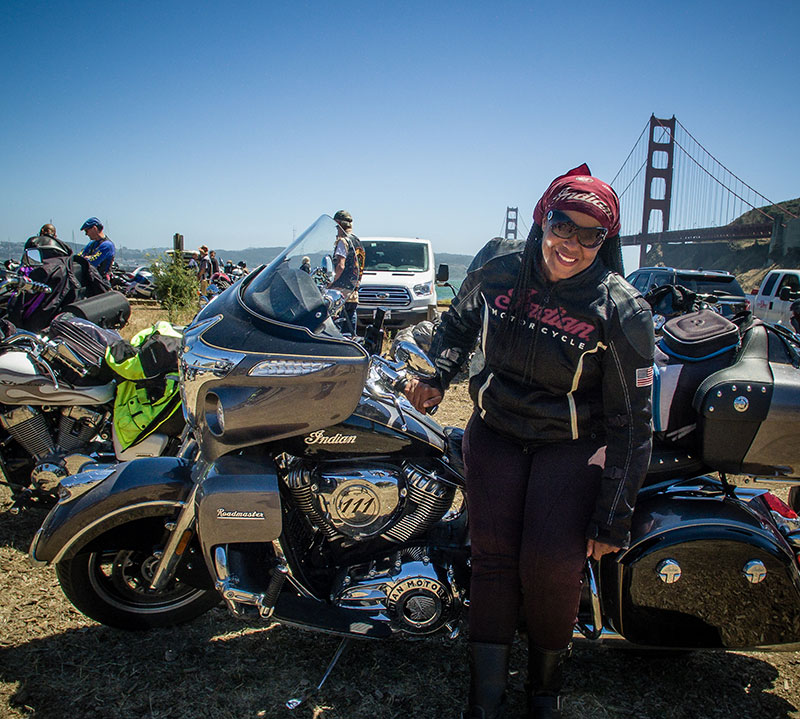
Not everyone was new to the idea of a cross-country ride. Secret, a jovial lady with an ever-present smile, was on her 18th crossing of the United States aboard a brand new Indian Roadmaster—and she was clear that this won’t be her last.
Then there’s Marjorie, who lost her son in a motorcycle accident. Many women, perhaps even most, would never ride a motorcycle after something like that. Not Marjorie. She went out and got her endorsement, and decided that doing this ride was the best way to honor her son’s life and memory. I can only imagine the emotions she was feeling as she passed beneath the sunset-colored arches of the Golden Gate Bridge to finish her journey surrounded by new friends.
There were many more women on the ride and many more stories, but they all shared one thing in common: strength and will. As Augusta Van Buren said, “Woman can, if she will.”
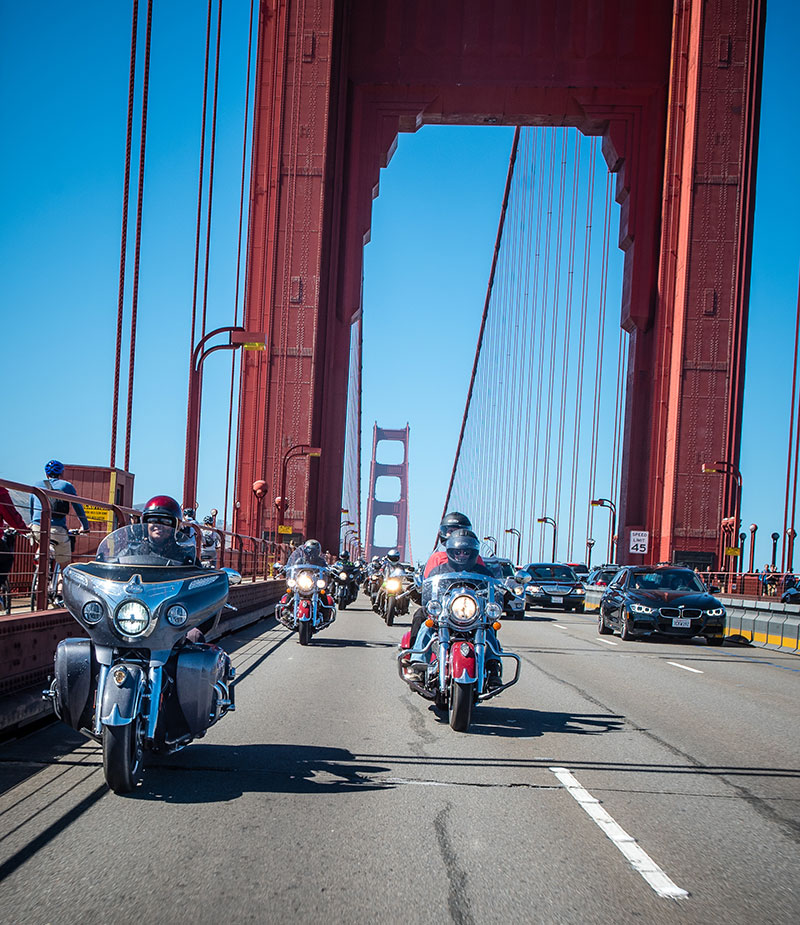
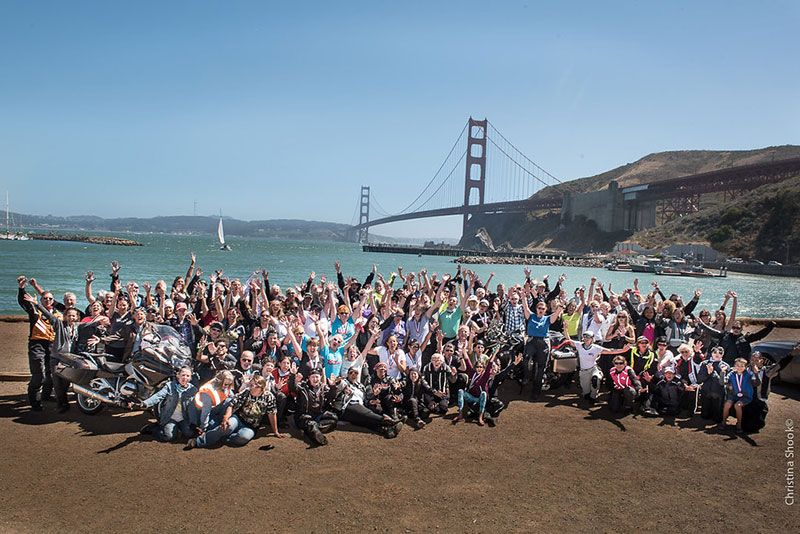
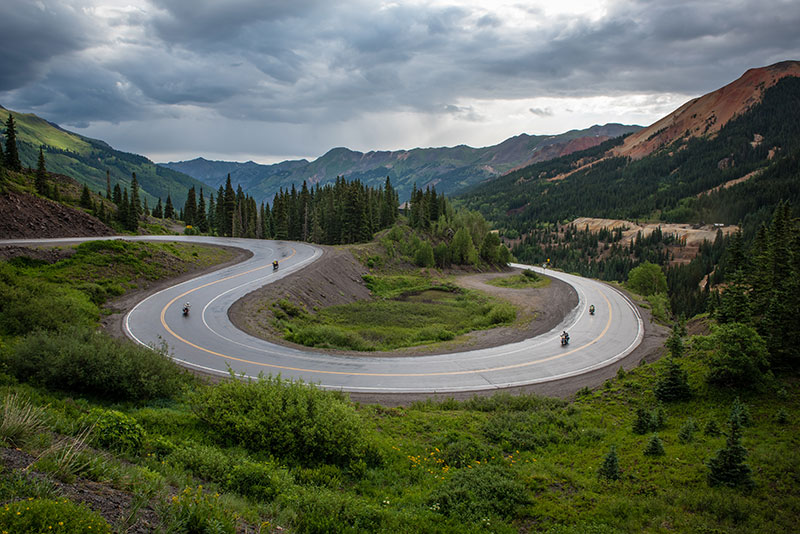
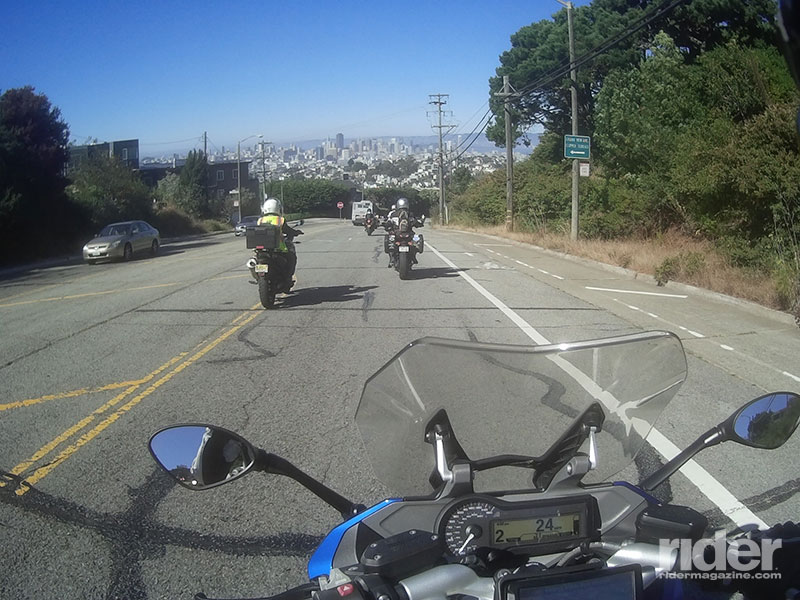
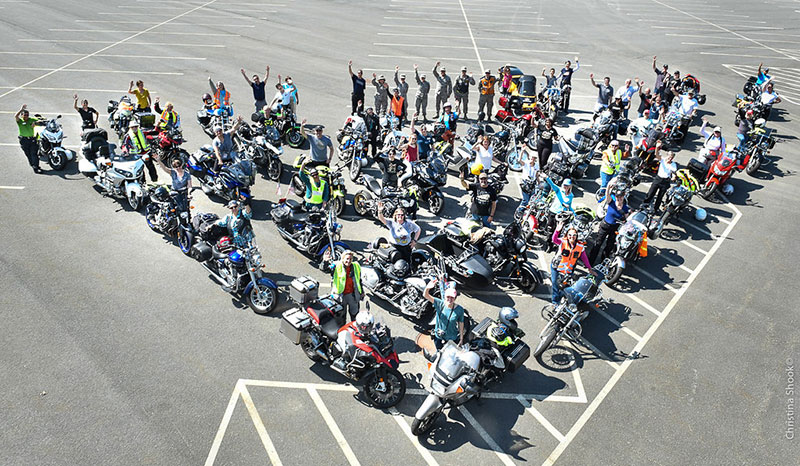








Augusta and Adeline Van Buren — The Original, TRUE, Badass 1%’ers.
Thanks, Jenny! It was a pleasure and honor having dinner with you!
Jenny! Such a pleasure riding with you, and sharing a looooong lunch during our stop in Middlegate. Thanks for riding with us, as well as for your terrific write-up! 😀
It was my pleasure, entirely! Great meeting and riding with all of you! -JS
Interesting that Harley didn’t support or encourage this Tour. And actually, I don’t care why. These Women did a fantastic ride and I respect and Cheer them on !